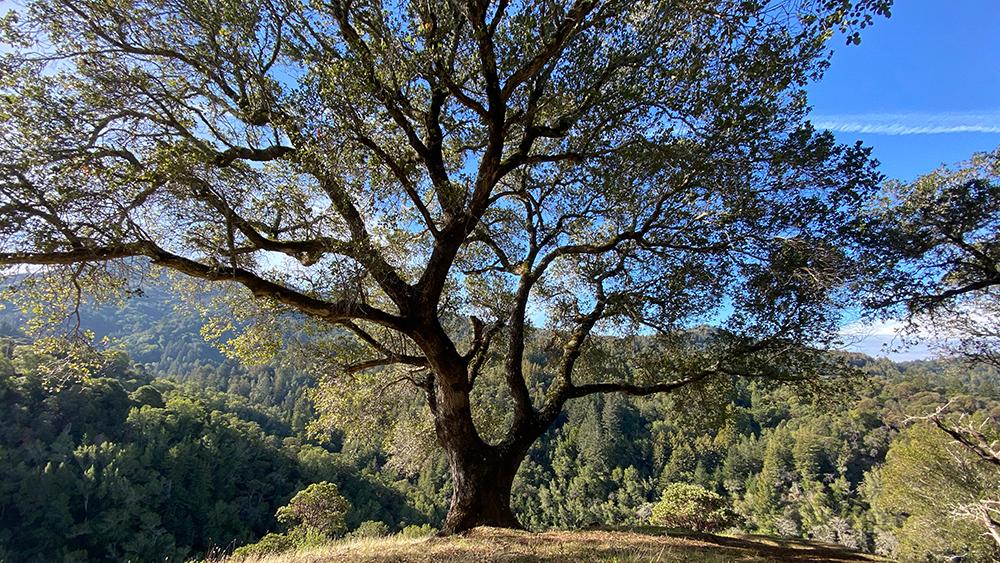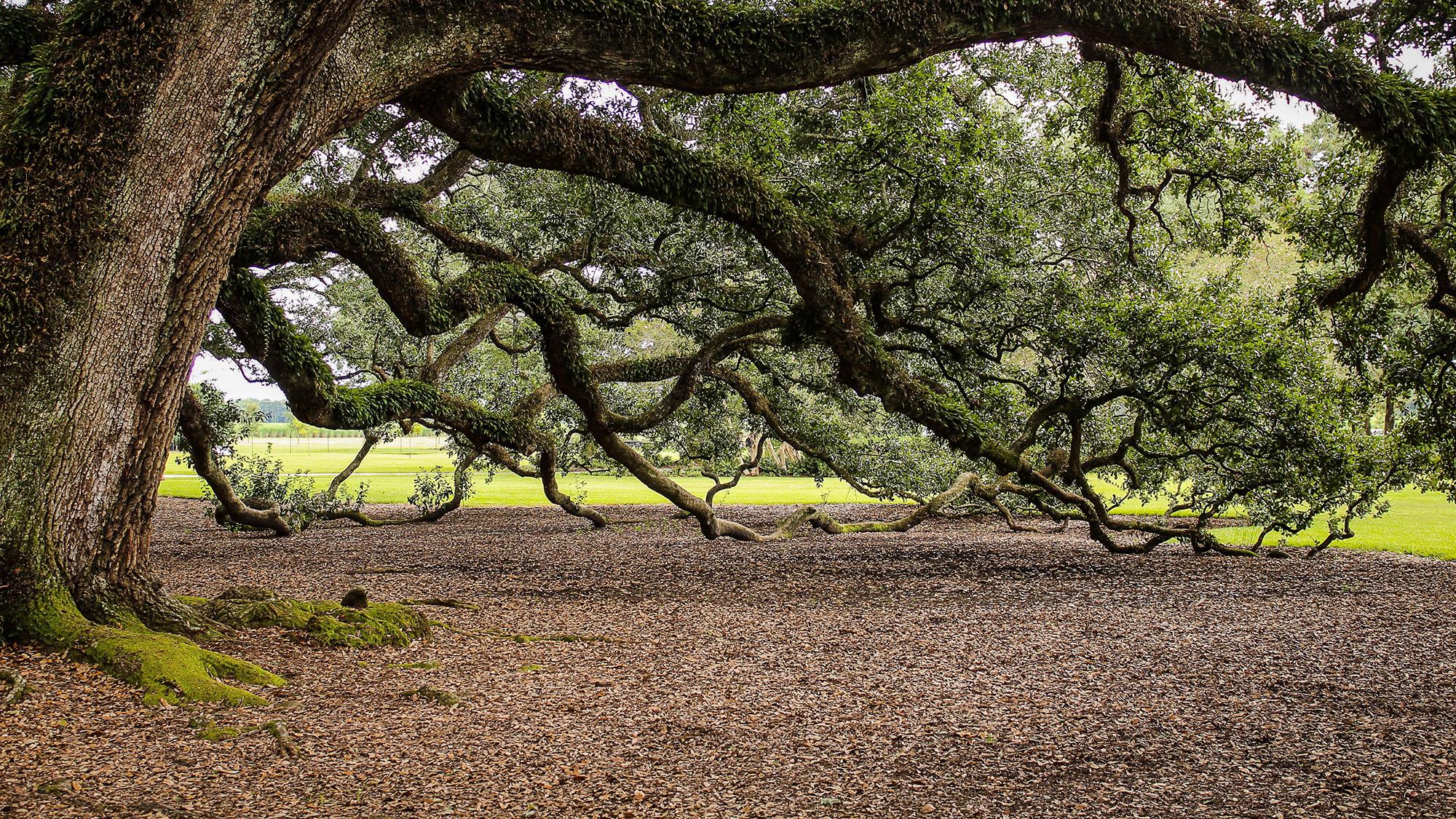Gardening Under Oaks

There are 21 oak trees native to California. These stately trees create iconic landscapes, live up to 400 years, and provide tremendous benefits. Oaks are good investments -- for homeowners and the environment. By following a few guidelines, landowners can preserve their oaks for generations to come.
USE OUR PLANT LIST: > PLANTS THAT THRIVE UNDER OAKS
Whether you inherited a heritage oak or are considering adding one to your landscape, be sure to keep the environment under the canopy healthy.
Guidelines for planting in oak understories
• Native plants that naturally occur with oaks are good choices.
• Plant as far away from the trunk as possible.
• Avoid plants that require summer water once established.
• Avoid plants that require fertilizer.
• Do not use sprinklers. To get plants established, use drip irrigation.
• Plant in fall before winter rains.
• Be fire-smart.
Benefits of oak trees
Biodiversity: Oak woodlands are among the most biodiverse ecosystems in California.
Habitat: Oaks are habitat heroes. They are visited by hundreds of insects, birds, and animals, and provide food for more moths and butterflies than any other plant.
Cleaner air: Because of their girth, oaks absorb significant quantities of airborne pollutants.
Cleaner water: Oaks absorb fertilizer, pesticides, and other trace contaminants in soil, which reduces these pollutants in our water.
Erosion control: Large tree canopies and dropped oak leaves help prevent soil erosion by buffering the impact of rainfall.
Enriched soil. Soil under oak canopies is high in organic material, which increases the carbon storage capacity. This helps mitigate climate change.
Other benefits: Shade, shelter, increased property value, food, fuel, recreational activities
Precautions when gardening under oaks
Don't disturb roots. Keep the area from the trunk to the edge of the canopy (the root zone) as natural as possible. Avoid heavy foot traffic, parked cars, trenching, construction, or anything that compacts the soil or raises the grade. This includes solid hardscape surfaces. Choose gravel or other permeable surfaces instead.
Don't remove dropped leaves, which support microorganisms that help protect oaks from disease.
Don't irrigate. Oaks want it wet in winter and dry in summer. Oak bark is not adapted to summer moisture, and wet summer roots are prime candidates for deadly diseases. Most oaks die within ten years if irrigated in summer.
Don't fertilize. Feeding oaks may stimulate excessive leaf growth and encourage pest problems. Improperly applied, it can injure roots or burn foliage.
Prune evergreen oaks judiciously and only during dry weather when open cut wounds are less susceptible to infection. Remove as little foliage as possible. Keep cuts small.
Prune deciduous oaks when dormant in winter.
Don't overdo it: mature oaks typically do not require pruning.

About Sudden Oak Death (SOD)
• SOD is a devastating plant disease that has killed over a million oak trees.
• It is caused by Phytophthora ramorum, a pathogen that thrives in cool, moist climates.
• SOD cases may increase as weather extremes increase.
Steps to avoid SOD
• Avoid infested SOD areas and muddy soil during rainy weather.
• If you enter an infested area during wet weather, scrape off any mud, soil, leaves, or other organic material from yourself as well as your pets and vehicle.
• Don’t collect or transplant host plants from infested or quarantined sites.
• Keep vehicles on paved surfaces during wet weather.
• Avoid doing yard work in rainy weather.
• Consider hiring a qualified arborist to treat susceptible oaks with a phosphonate fungicide annually
Learn more about Sudden Oak Death
